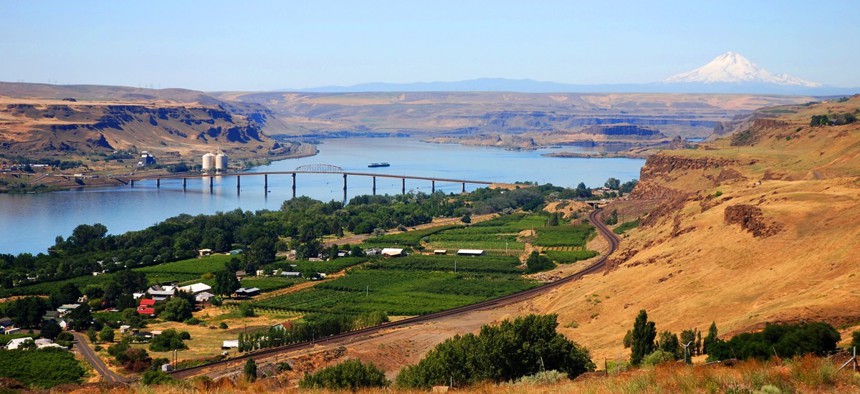FCC’s Mobile Coverage Maps Leave Industry, Lawmakers Worried for Rural America

Rural Oregon.
$4.53 billion in federal funds are in limbo, while some are wondering if another $10 billion is needed to get Next Generation 9-1-1 off the ground in outlying areas.
WASHINGTON — Industry experts continued to express concern Tuesday with the accuracy of Federal Communications Commission maps that will dictate how to spend $4.53 billion to help build out rural mobile voice and broadband coverage over 10 years.
Mobile carriers were required to submit up-to-date coverage data on fourth-generation long-term evolution, or 4G LTE, wireless service to the FCC ahead of Mobility Fund Phase II.
But carrier responses weren’t standardized, nor did reported service everywhere qualify as 4G LTE when speed tests were performed, said Tim Donovan, senior vice president of legislative affairs at the Competitive Carriers Association, during a House Energy and Commerce hearing on closing the digital divide in D.C.
“We need to make sure the ask for carriers on the front end is correct,” Donovan said. “We’ve also learned that you can’t put the entire burden of fixing that map on carriers, on state governments, on local governments.”
The mobility fund is currently in the challenge process, where interested parties may contest an initial FCC determination on whether an area is eligible for federal funds. Wireless providers are then allowed to respond.
Donovan said the challenge process is “extremely onerous,” with carriers only challenging a “small portion of areas they would’ve liked” due to time and resource constraints.
Flawed maps have lawmakers worried rural cities and towns will be shortchanged.
“What I don’t want to see then is a bunch of money thrown into places that already have service and overbuilding and places like Seneca and John Day and everywhere else are left off even a two-lane digital road—not a superhighway by any means,” said U.S. Rep. Greg Walden, an Oregon Republican.
Meanwhile, U.S. Rep. Mike Doyle, a Pennsylvania Democrat, cited an estimate that $10 billion of additional federal investment may be needed to launch Next Generation 9-1-1 nationwide.
Most 9-1-1 networks in the U.S. rely on technology more than 50 years old and might not transition to NG911 within the next decade without federal funding, said Jeff Cohen, chief counsel for the Association of Public Safety Communications Officials-International.
“Even in the few areas of the country where some states and localities have attempted to start implementing pre-NG911 facilities, it’s costly, it’s proprietary and it lacks interoperability,” Cohen said. “Without a big focus by the federal government on Next Generation 9-1-1, we won’t get there—especially not in a uniform fashion.”
Dave Nyczepir is a News Editor at Government Executive’s Route Fifty and is based in Washington, D.C.
NEXT STORY: Copper Thieves Strike America's Roadways






